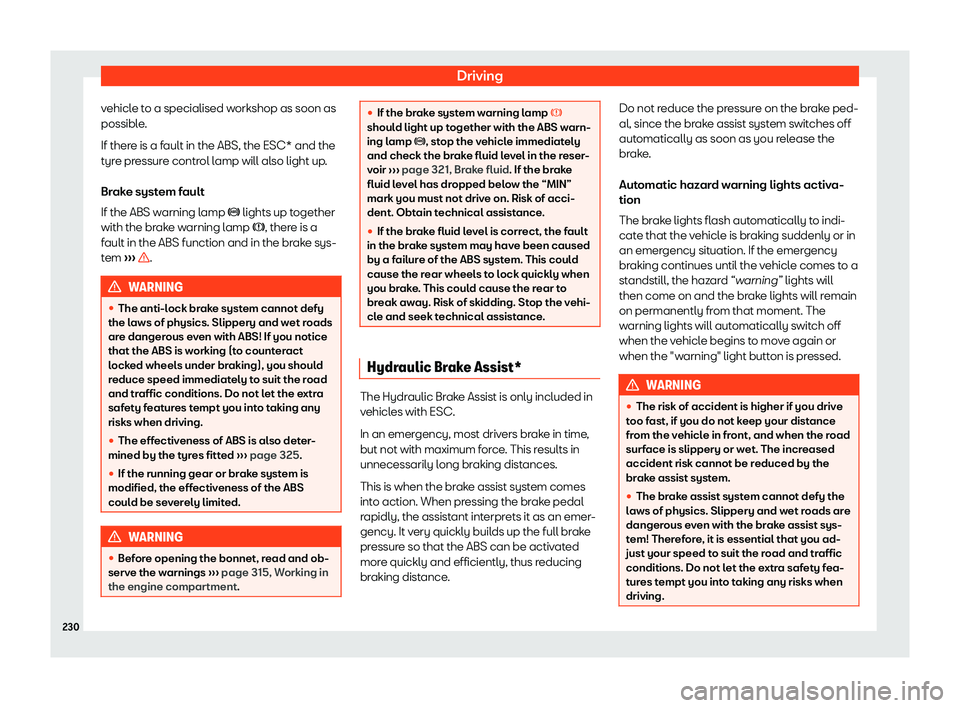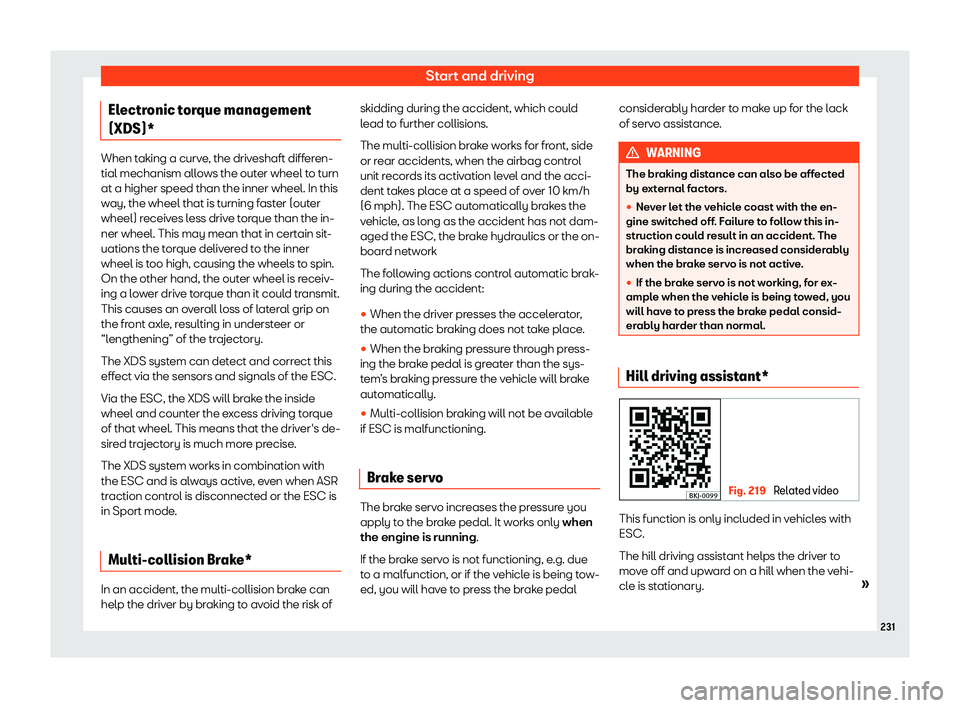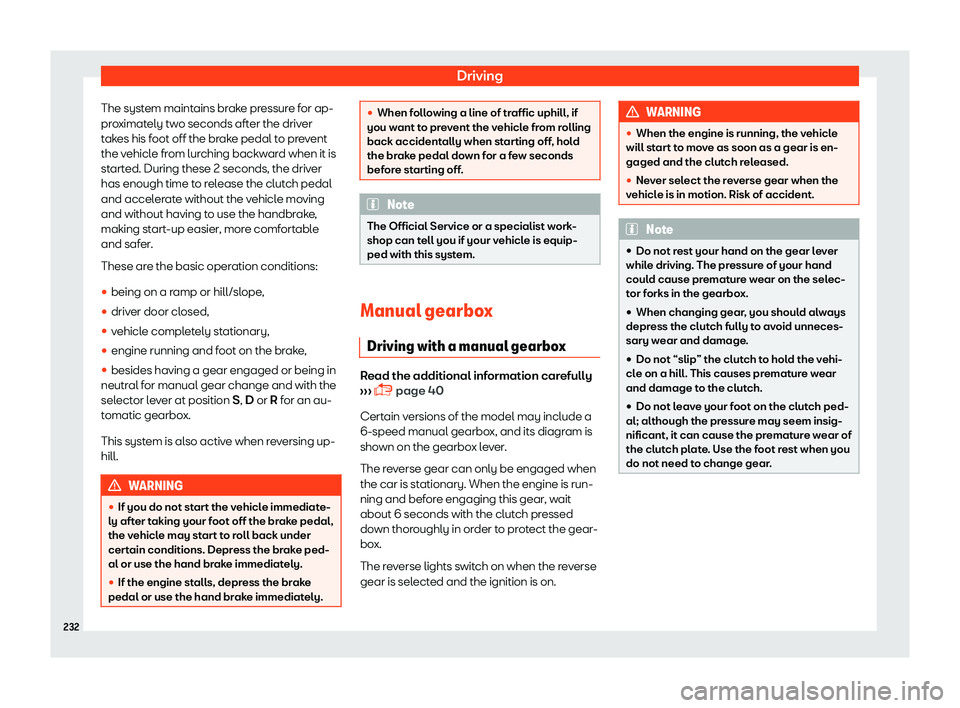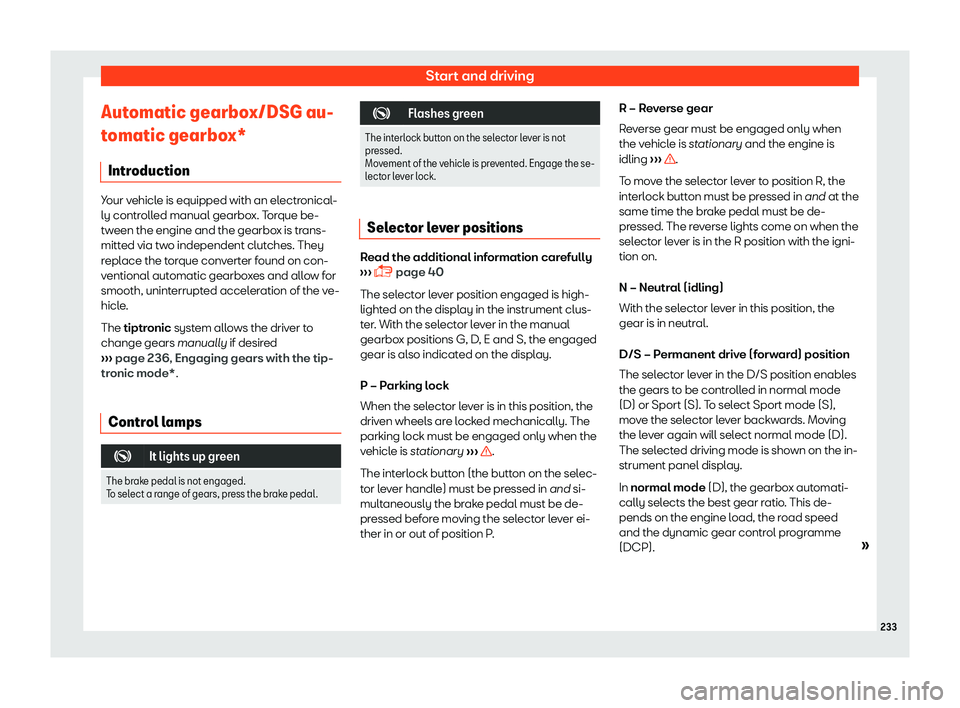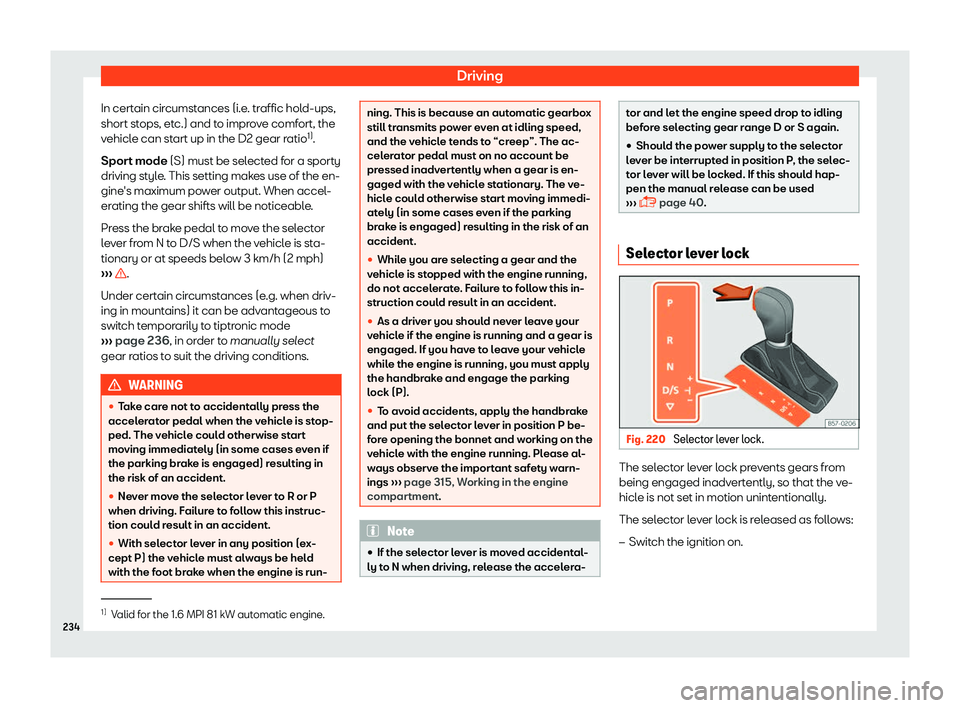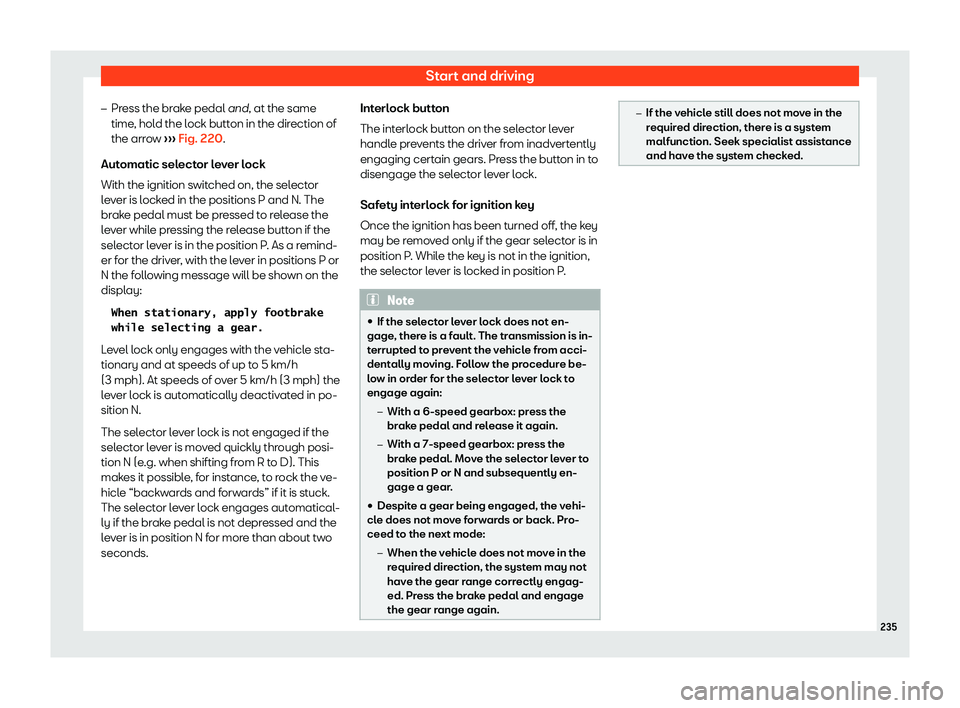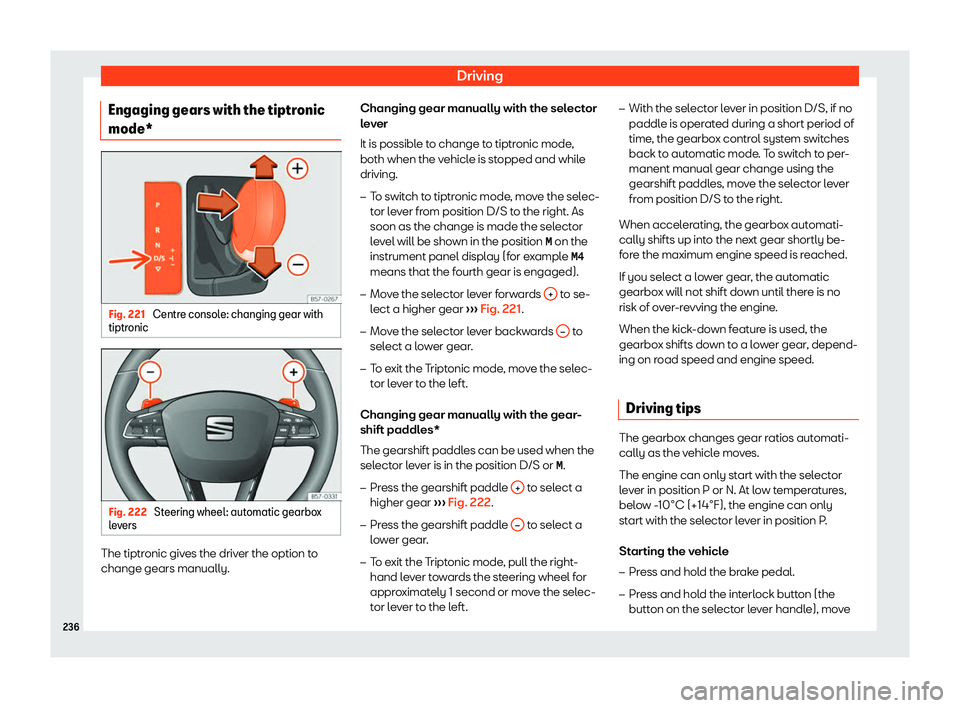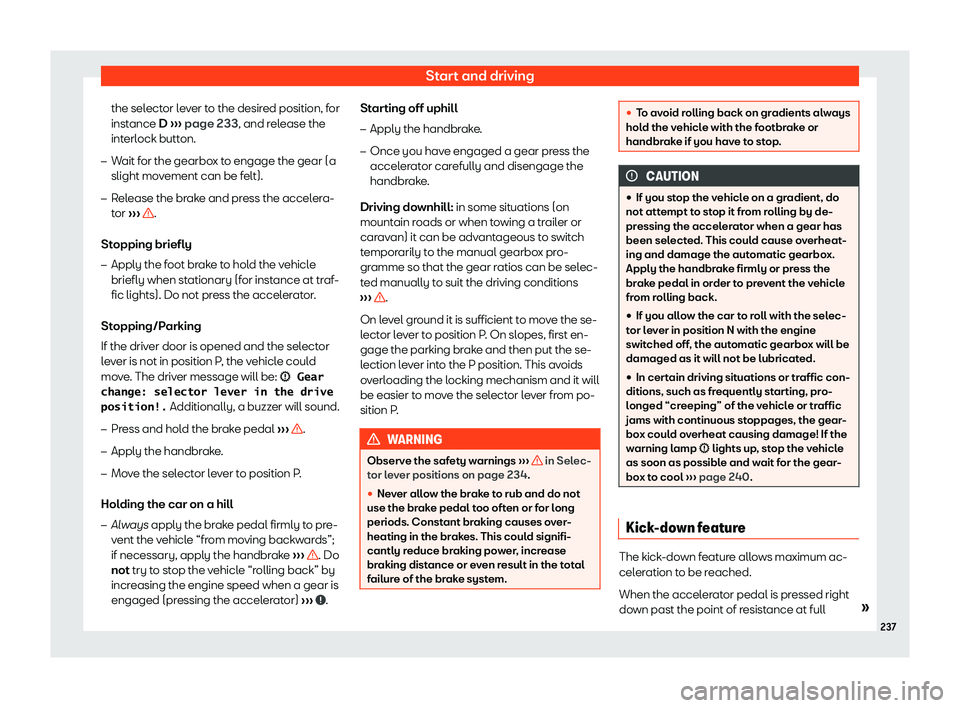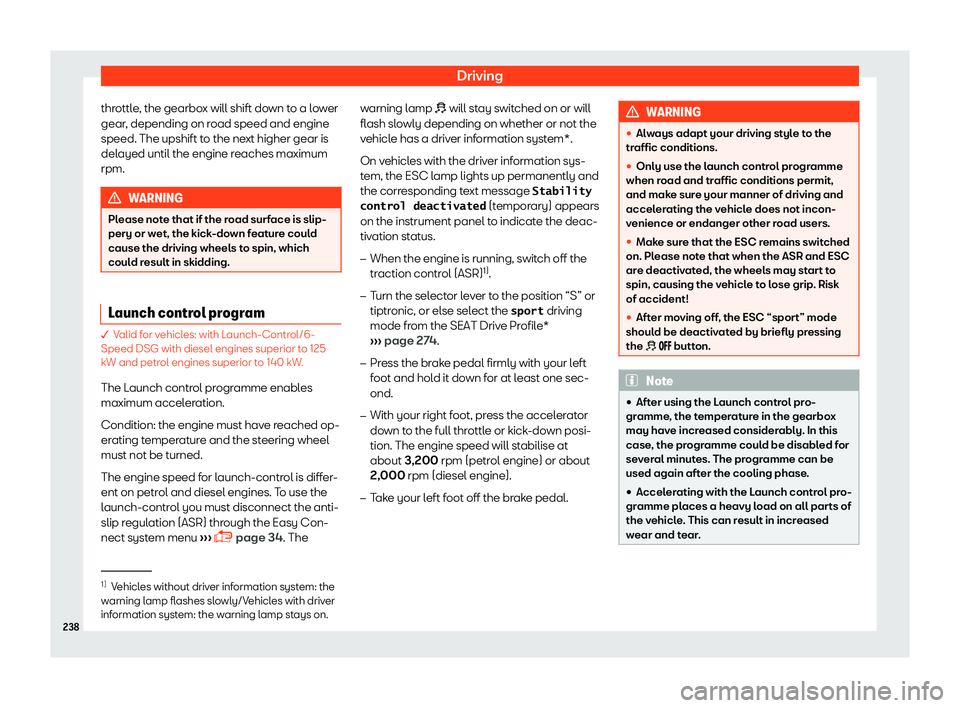Seat Arona 2019 Owner's Manual
Arona 2019
Seat
Seat
https://www.carmanualsonline.info/img/39/28907/w960_28907-0.png
Seat Arona 2019 Owner's Manual
Trending: snow chains, change time, wiper size, navigation system, deactivate passenger airbag, Key battery, keyless entry
Page 231 of 372
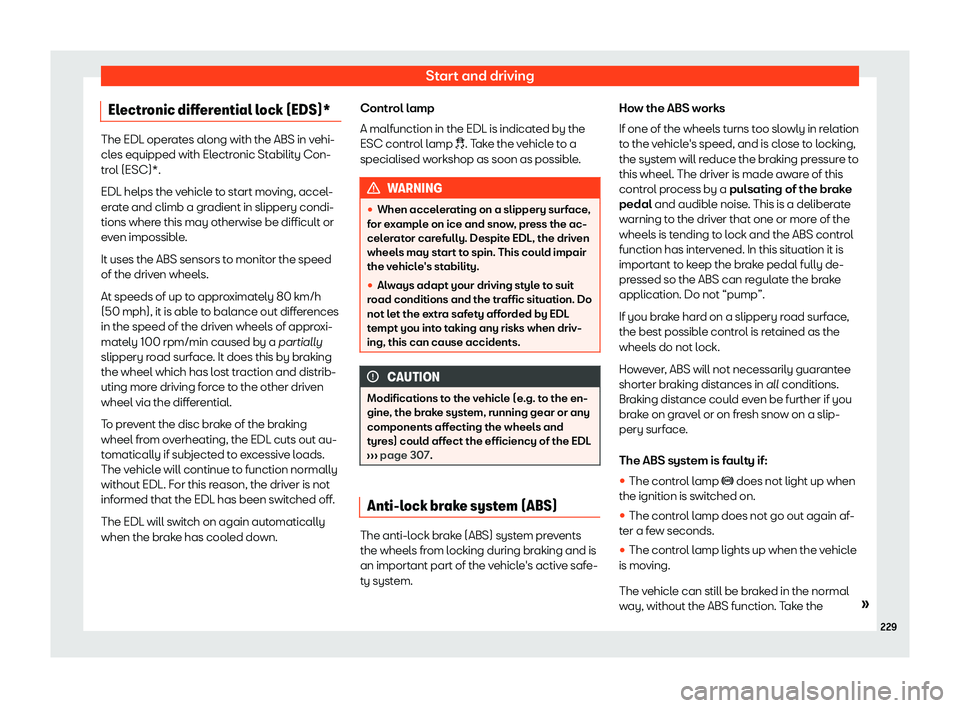
Start and driving
Electronic differential lock (EDS)* The EDL operates along with the ABS in vehi-
cles equipped with Electronic St
abilit
y Con-
trol (ESC)*.
EDL helps the vehicle to start moving, accel-
erate and climb a gradient in slippery condi-
tions where this may otherwise be difficult or
even impossible.
It uses the ABS sensors to monitor the speed
of the driven wheels.
At speeds of up to approximately 80 km/h
(50 mph), it is able to balance out differences
in the speed of the driven wheels of approxi-
mately 100 rpm/min caused by a partially
slippery road surface. It does this by braking
the wheel which has lost traction and distrib-
uting more driving force to the other driven
wheel via the differential.
To prevent the disc brake of the braking
wheel from overheating, the EDL cuts out au-
tomatically if subjected to excessive loads.
The vehicle will continue to function normally
without EDL. For this reason, the driver is not
informed that the EDL has been switched off.
The EDL will switch on again automatically
when the brake has cooled down. Control lamp
A malfunction in the EDL is indicated by the
ESC control lamp �
. Take the vehicle to a
specialised workshop as soon as possible. WARNING
�
Page 232 of 372
Driving
vehicle to a specialised workshop as soon as
possibl e
.
If ther e is a f
ault in the ABS, the ESC* and the
t
yre pressure control lamp will also light up.
Brake system fault
If the ABS warning lamp � lights up together with the brake warning lamp �, there is a
fault in the ABS function and in the brake sys-
tem
Page 233 of 372
Start and driving
Electronic torque management
(XDS)* When taking a curve, the driveshaft differen-
tial mechanism allows the outer wheel t
o t
urn
at a higher speed than the inner wheel. In this
way, the wheel that is turning faster (outer
wheel) receives less drive torque than the in-
ner wheel. This may mean that in certain sit-
uations the torque delivered to the inner
wheel is too high, causing the wheels to spin.
On the other hand, the outer wheel is receiv-
ing a lower drive torque than it could transmit.
This causes an overall loss of lateral grip on
the front axle, resulting in understeer or
“lengthening” of the trajectory.
The XDS system can detect and correct this
effect via the sensors and signals of the ESC.
Via the ESC, the XDS will brake the inside
wheel and counter the excess driving torque
of that wheel. This means that the driver
Page 234 of 372
Driving
The system maintains brake pressure for ap-
pr o
ximat ely tw
o seconds aft
er the driver
takes his foot off the brake pedal to prevent
the vehicle from lurching backward when it is
started. During these 2 seconds, the driver
has enough time to release the clutch pedal
and accelerate without the vehicle moving
and without having to use the handbrake,
making start-up easier, more comfortable
and safer.
These are the basic operation conditions:
�
Page 235 of 372
Start and driving
Automatic gearbox/DSG au-
t omatic gearbo
x*
Intr oduction Your vehicle is equipped with an electronical-
ly controlled manual gearbox. T
or
que be-
tween the engine and the gearbox is trans-
mitted via two independent clutches. They
replace the torque converter found on con-
ventional automatic gearboxes and allow for
smooth, uninterrupted acceleration of the ve-
hicle.
The tiptronic system allows the driver to
change gears manually if desired
Page 236 of 372
Driving
In certain circumstances (i.e. traffic hold-ups,
short st ops, et
c.) and t o impr
o
ve comfort, the
vehicle can start up in the D2 gear ratio 1)
.
Sport mode (S) must be selected for a sporty
driving style. This setting makes use of the en-
gine
Page 237 of 372
Page 238 of 372
Driving
Engaging gears with the tiptronic
mode* Fig. 221
Centre console: changing gear with
tiptr onic Fig. 222
Steering wheel: automatic gearbox
l e v
ers The tiptronic gives the driver the option to
change gears manually. Changing gear manually with the selector
l
e
ver
It is possibl e t
o change to tiptronic mode,
both when the vehicle is stopped and while
driving.
�
Page 239 of 372
Start and driving
the selector lever to the desired position, for
inst ance
D
Page 240 of 372
Driving
throttle, the gearbox will shift down to a lower
gear , depending on r
oad speed and engine
speed. The upshift t o the ne
xt higher gear is
del
ayed until the engine reaches maximum
rpm. WARNING
Please note that if the road surface is slip-
pery or wet, the kick-down f eat
ure could
cause the driving wheels to spin, which
could result in skidding. Launch control program
�� Valid for vehicles: with Launch-Control/6-
Speed DSG with diesel engines superior to 125
kW and petr
ol engines superior t
o 140 kW.
The Launch control programme enables
maximum acceleration.
Condition: the engine must have reached op-
erating temperature and the steering wheel
must not be turned.
The engine speed for launch-control is differ-
ent on petrol and diesel engines. To use the
launch-control you must disconnect the anti-
slip regulation (ASR) through the Easy Con-
nect system menu
Trending: rear view mirror, roof rack, Warning, phone, ignition, bulb, ad blue

